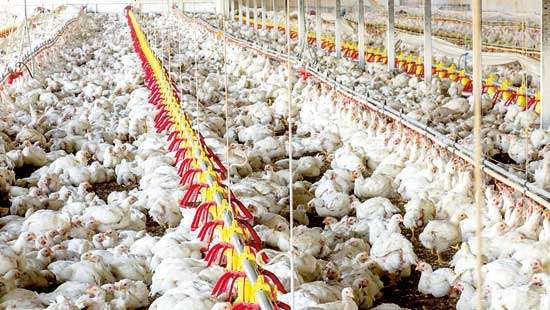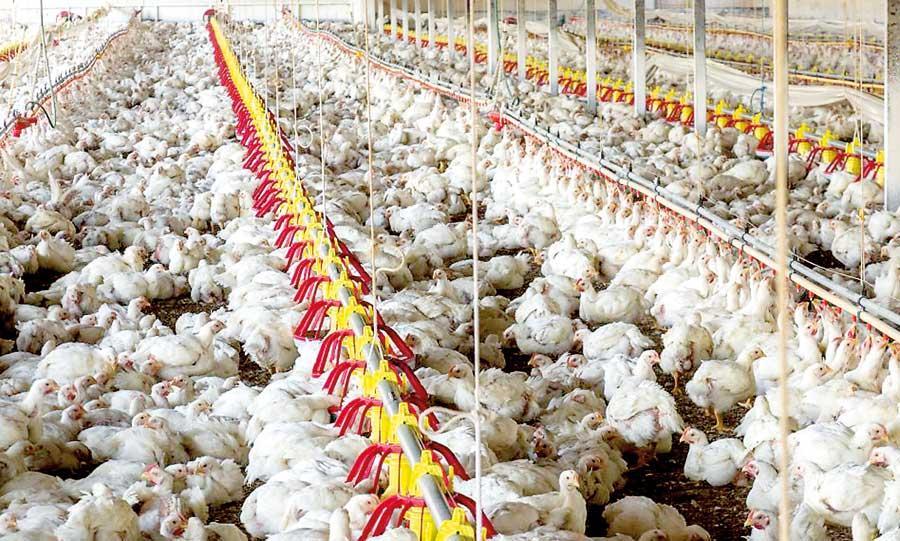Reply To:
Name - Reply Comment

- Rising input costs, shortages of animal and veterinary medicines, fuel shortage and rupee liquidity issues in the banking sector cited as key reasons
- Production of animal feed has declined by around 40% due to current crisis
- Production of calf and milk yields impacted by inability of veterinarians to travel to farms in a timely manner due to fuel shortage
- All-Island Poultry Association warns that it would take years for poultry industry to bounce back if the government doesn’t act immediately

Sri Lanka’s self-developed poultry and dairy industries are on the verge of collapse amid rising input costs and shortages of animal and veterinary medicines along with the fuel shortage and rupee liquidity issues in the banking sector, raising concerns of food security and malnutrition.
“Not only the shortage and high prices of raw materials for poultry feed, but also power and fuel have been a bottleneck for our operations. Timely transport is essential in every stage of this operation,” Sri Lanka Poultry Forum Chairman Ajith Weerasinghe said.
He was speaking at a media briefing organised by Sri Lanka Veterinary Association (SLVA) in Colombo last week.
Weerasinghe highlighted that the country’s self-developed poultry industry consisting of a high number of large-scale broiler poultry farms with latest technologies and machineries in particular are struggling to sustain their operations due to power cuts and fuel shortages.
“All these farms are fully automated and operated using software. Temperature, humidity, ventilation and even wind speed inside cages are being controlled by software and even feeding and watering of birds are on pre-set schedules, which are fully automated.
In order to run these operations, we need continuous power supply, since birds cannot survive at least for 15 minutes if power fails and all the systems turn down. All these farms have power generators to be used in emergencies, but we need fuel for that. Poultry feed manufacturing also needs continuous power supply,” he elaborated.
According to Dr. Ushan Pallegama of World’s Poultry Science Association- Sri Lanka Branch, the production of animal feed which includes maize, straw, paddy husk and rice polish has declined by around 40 percent due to the current crisis, which resulted in a corresponding decline in egg and chicken production.
Meanwhile, Weerasinghe noted that producers are struggling to secure loan facilities from banks due to the rupee liquidity shortage in the banking sector.
As veterinarians are struggling to make their usual visits to livestock farms to provide their services due to the fuel shortage, State Veterinary Surgeons Association President H. A. Piyasiri emphasised that the production of calf and milk yields are being impacted.
“Artificial insemination which has to be done in a timely manner has been affected due to the fuel shortage, which directly affects the production of calf and milk yield,” he said.
Further, shortage and high prices of veterinary medicaments and vaccines have also caused severe delays in treating diseased animals and disease control programmes.
On the other side, the price escalations of livestock products have been forcing consumers to cut down the consumption, which in turn has raised malnutrition risks, in particular among children, older population and pregnant women.
According to Sri Lanka Medical Nutrition Association President Dr. Renuka Jayatissa, Sri Lankans should source one third of their protein requirement from animal proteins.
“Specially the levels and nature of egg proteins are highly important for human diet and we can recommend at least one egg per day for a healthy person, but can vary according to the requirement and health situation of the person. Further, milk and meat too play a vital role in human nutrition. Therefore, sustainability of this industry is very important to assure food security of the country,” she added.
The All-Island Poultry Association President Ajith Gunasekara warned that it would take years for the poultry industry to bounce back, if the government doesn’t act right away. (NF)